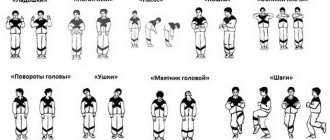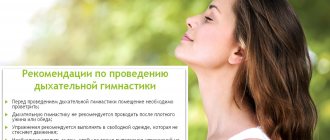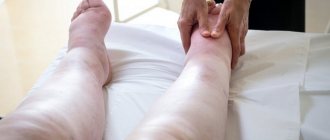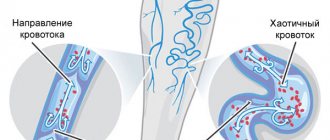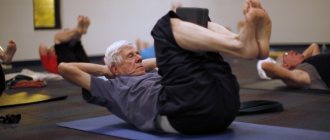A disorder of the autonomic nervous system develops for various reasons. For example, high blood pressure may be associated with vegetative-vascular dystonia. When the disorder occurs, the heartbeat quickens, breathing becomes frequent and shallow, and the body begins to suffer from oxygen deficiency. Exercises for VSD, especially breathing exercises, improve the condition of patients.
Breathing exercises
The practice of proper breathing helps during exacerbation of the syndrome and promotes recovery. For positive results, it is necessary to master different types of breathing and proper sports during VSD. Depending on the situation, learn to breathe evenly, deeply, or use shallow breathing.
Breathing and vegetative-vascular dystonia
One of the reasons for the development of the syndrome is stress and heavy physical activity. During an attack, it is difficult for the patient to take a breath, dizziness, anxiety, and fear of losing consciousness or suffocation develops.
Modern medicine claims that this problem is of psychological origin. The patients have neither asthma nor problems with the respiratory system. The cause of the painful condition is neurosis, the source of which can be panic. Treatment of the syndrome is carried out comprehensively, and breathing exercises for VSD occupy an important place in it.
Here are some observations and advice from the famous psychology professor Kurpatov:
- If the cardiogram does not confirm sclerosis of the coronary vessels, then shortness of breath is only a subjective sensation;
- The fear of death during VSD has no real basis; moreover, when breathing is lost, the body’s defense mechanisms are activated, which will not allow the person to die;
- If a patient with vegetative dystonia does not have enough air, he needs to look at other people breathing calmly. Next, you should realize that there is enough oxygen for everyone around and, having understood this, calm down;
- The first thing people with VSD syndrome need to learn is the ability to calm down and breathe correctly.
Basics of proper breathing
If a person is constantly tormented by problems associated with breathing, and this occurs against the background of vegetative-vascular dystonia, one should learn the basics of proper breathing.
Tips for proper breathing
- You need to breathe not only from the chest, but also from the entire diaphragm, using the front wall of the abdomen. When you inhale, the lungs should expand first, then the chest, and then the stomach should rise. When exhaling, practice the reverse order.
- You should breathe through your nose. Passing through the nostrils, the air is purified, moistened and warmed.
- When squatting, you should exhale, and when straightening your body, as when lifting a load, you need to inhale.
Breathing exercises
Exercises should be performed twice a day, 10 repetitions each.
- Rhythmic breathing through the nose. First, a calm inhalation and exhalation is carried out. Then the air is inhaled alternately from one nostril to the other. The exercise is made more difficult by inhaling and pushing and rhythmically exhaling through the mouth.
- Abdominal breathing. When inhaling air through the nose, the chest remains motionless and the stomach protrudes. When you exhale, the stomach retracts. To calm down, it is recommended to practice abdominal breathing with exhalations through the mouth.
- Chest breathing. The stomach remains motionless. Inhaling air through your nose, you need to expand your chest as much as possible, then exhale harder, imagining how your lungs are completely freed from air.
Breathing exercises for VSD provide noticeable results in recovery. Abdominal breathing is especially helpful in maintaining a stable state.
How should you breathe?
It is necessary to learn to breathe correctly not at the moment of panic, but in a state of normal well-being, since if severe anxiety occurs, there will be no time for training. Special breathing exercises will help not only eliminate unpleasant symptoms, but will also teach you how to stop anxiety attacks at the very beginning:
- At the moment of increasing fear and increased heart rate, you should try to relax and adjust your breathing. It is necessary to take short breaths through the nose and exhale for a long time through the mouth. Exhalation should be accompanied by a feeling of complete “release” of air.
- For the next exercise you will need a paper bag into which you just need to breathe. Exhalations should also be long. You should not worry if you feel a slight lack of air while performing the technique - this is how the balance of carbon dioxide and oxygen in the blood is restored. Breathing into a bag during a panic attack may not be very convenient, so instead of this item, you can use your palms cupped.
- Place your palms on your stomach and make a tube with your lips. Counting to 10, slowly inhale and exhale. Perform the exercise for 3 to 5 minutes.
- Take 3-4 quick breaths and exhale just as quickly, but efficiently. This technique helps you quickly relax and get rid of the feeling of suffocation.
- If panic is accompanied by a feeling of unreality of the events taking place, you need to place your palm on your stomach (after freeing it from clothes) and try to concentrate on this feeling. In this case, you need to breathe with your stomach.
- If panic is approaching, you can also try to focus on the breathing itself - one inhalation and one exhalation, twice the duration of the inhalation. While performing the exercise, you should try not to think about fear.
In addition to breathing exercises, it is recommended to use the “change of emotions” technique. It is known that one emotion becomes weaker at the expense of another, which manifests itself most intensely. To try to “redirect” the panic wave, you can apply a cold (hot) object to your hand or face.
Knowing what proper, full breathing is during a panic attack is very important for a person who often experiences attacks of severe anxiety. As a rule, this eliminates the risk of developing respiratory neurosis - a condition in which the patient is constantly tormented by thoughts about whether he is breathing correctly and tries to determine how full his breath is.
These actions cause severe anxiety, making it even more difficult to breathe. A patient suffering from neurosis may perceive even the slightest respiratory changes as a threat to life, and this, in turn, can lead to the development of irrational fears.
Source: distonija.com
Therapeutic gymnastics, exercises
When it comes to the advisability of participation of people with VSD in active sports, the opinions of experts are divided. Regarding therapeutic exercises in combination with breathing exercises, most doctors speak favorably.
The human body is programmed for life activity, which implies systematic motor activity and regular physical activity. Unfortunately, modern living conditions are not conducive to daily and targeted physical education. Most people don't even do exercises in the morning.
All this can lead to a weakening of the body and make it unable to withstand even small emotional and physical stress, as well as quickly adapt to changes. This is where stress, irritation and other factors contribute to the development of VSD appear.
How the body reacts to exercise
The body’s usual reaction to physical activity is to increase tone and improve oxygen supply to internal organs. Over time, endurance and willpower develop. Problems may not be perceived as acutely as before. A healthy body means a healthy mind, so the beneficial effects of physical exercise on the body will have a positive effect on mental health. The entire body is restored as a whole.
Systematic training has a positive, tonic effect on the patient’s nervous system. The processes of excitation and inhibition return to normal, the autonomic nervous system is strengthened, and brain function improves.
The beneficial effect on the cardiovascular system will be associated with training and strengthening the heart muscle, normalizing circulatory functions. Thanks to systematic exercises, coronary and venous hemodynamics will improve, cholesterol will decrease, and the efficiency of systole will increase.
In the respiratory system, as a result of therapeutic exercises, the mobility of the diaphragm will increase, the volume of the lungs will expand, and their ventilation will improve. Practicing proper breathing will ease the patient’s condition and contribute to a speedy recovery.
Exercise options
Aerobic and dynamic exercises are considered the most useful for autonomic dysfunction. The load when performing them should be moderate and not cause severe stress.
Most suitable:
- Run;
- Walking;
- Any type of swimming;
- Contrast shower for VSD;
- Aerobics, fitness, Pilates, etc.;
- A ride on the bicycle;
- General strengthening gymnastics;
- Yoga for VSD;
- Charger.
Not recommended:
- Weightlifting;
- Cross-Fit;
- Exercises according to the Tabata system;
Any set of exercises for VSD should be selected individually, and if any of them, even the most common ones, causes a deterioration in well-being, you should exclude it from your training.
Gymnastics at home
Exercise therapy for VSD / Click to enlarge
Exercise therapy for vegetative-vascular dystonia is the safest and most widely used method of recovery. Symptoms of VSD such as anxiety, apathy, and lack of self-confidence may prevent the patient from starting physical exercise with a trainer, going to the gym, or jogging in the nearest park. However, there is a simple way out - start training without leaving home. This will help in overcoming the psychological barrier. Subsequently, it will be possible to perform gymnastics in the fresh air, or join classes in special groups or sections.
Any, even the simplest exercises, will help strengthen the body and reduce the manifestation of VSD, if you follow a few simple rules:
- The set of exercises must be selected individually;
- The load should be increased gradually;
- Do not confuse sports and exercise therapy (physical therapy);
- You need to exercise regularly;
- You can achieve better results if you combine physical exercise with breathing exercises, massage and water treatments.
Yoga classes
Recently, yoga classes have become quite widespread. Yoga for VSD can bring a very lasting positive effect. This happens for the following reasons:
- Yoga allows you to develop a level of self-control over emotions and feelings.
- Overall well-being improves through the use of internal resources.
- Normalization of blood pressure and metabolic processes.
- Gradual normalization of the tone of the vascular system.
- Normalization of the work of all internal organs.
This gymnastics requires a very careful approach. There are several areas of yoga, and it will be very difficult for a person not privy to the intricacies of this technique to figure it out on their own. Therefore, it is advisable to begin training under the full supervision of a highly qualified trainer.
Unfortunately, yoga may not be suitable for people diagnosed with hypotonic VSD. With low blood pressure, you can often experience dizziness or even loss of consciousness. Such patients always have a decreased vitality, and it will be extremely difficult for them to force themselves to perform even the simplest asanas. For those who still find the strength to exercise regularly, good health will be a worthy reward within a few weeks.
Pool
By running, walking, cycling and performing various exercises, you can significantly improve your condition with VSD. Moderate physical activity will strengthen the functioning of the cardiovascular system, normalize the functioning of the central nervous system and help improve the health of the entire body. The main thing is that it can give a charge of vivacity and good mood. With regular physical education, the will is strengthened and endurance increases.
Swimming as part of a health complex for VSD
Click to enlarge
Swimming is one of the best means of healing the body and treating the nervous system. It forces a large number of muscles to work. The chest, back, legs, arms, stomach, and shoulder girdle work in this process. Such exercises increase endurance and strength.
The pool gives you the opportunity to communicate with the water element at any time of the year. Most people associate the surface of water with the most pleasant childhood memories. The sea, river, pond, summer vacation, beautiful water landscapes come to mind.
Benefits of visiting the pool
Swimming in the pool has a comprehensive effect on the body. The load is placed on many muscle groups, the respiratory and cardiovascular systems.
Respiratory system
Swimming strengthens the respiratory muscles and tones them. Breathing is coordinated with the movements of the whole body, especially the arms and legs. Each cycle of arm swings corresponds to one inhalation or exhalation. With a large expenditure of energy, the need for oxygen increases, so each breath must be used to the maximum. Such breathing develops muscles, expanding the diaphragm, which leads to an increase in lung volume and improved functionality of the respiratory system.
The cardiovascular system
People who frequently visit the pool, regardless of swimming style, increase the strength of the heart muscle and heart power. Heart rate and blood pressure return to normal. Simply being in water can improve your blood composition. After two hours of swimming in the pool, the number of red blood cells, hemoglobin, and leukocytes increases.
Nervous system
Swimming has a beneficial effect on the nervous system. It tones it, balances the processes of inhibition and excitation, improves brain function. Swimming relieves fatigue, irritation, helps with stress, improves mood and sleep. Regular exercise can improve willpower and discipline, which helps you withstand stressful situations and get through difficult times more easily.
The effect of swimming on the treatment of VSD
Regular visits to the pool help develop such important character traits as perseverance, determination, courage, determination, and self-control. They help a person resist his illness and endure the increased pace of life and change.
The regulation of breathing and massage of the whole body that a person receives while swimming allows him to feel lightness and feel weightless. This significantly reduces tension and charges you with positivity. In the pool you can not only practice swimming, this place is perfect for a pleasant pastime. A visit to the pool will help you avoid loneliness and make friends.
Combining health benefits and pleasure, swimming in the pool is an excellent cure for VSD, which, in combination with other remedies, will definitely lead to healing and an improved quality of life.
Restrictions in sports activities for patients with dystonia: when and how to introduce them?
Vegetative-vascular dystonia and sports are incompatible professionally. Patients with any type of VSD should avoid super-intense exercise, since extensive symptoms limit the endurance and performance of the athlete.
You should not participate in professional team sports, especially playing for results at any cost. This could trigger a crisis.
Weightlifting or powerlifting is prohibited for dystonic patients. Any wrestling, boxing, or sparring in martial arts is prohibited. These sports involve sudden lunges without respite, which leads to increased blood pressure, shortness of breath, and dizziness.
The following types of load are contraindicated:
- barbell bench press;
- parachuting;
- acrobatics.
Massage
Click to enlarge
Vegetative-vascular dystonia is usually not accompanied by structural organ disorders. Nevertheless, this syndrome causes a lot of unpleasant sensations. Experts offer several ways to combat it. To alleviate the condition, the following are used: psychotherapy, acupuncture, physical therapy for VSD, swimming, massage and medications. Massage for VSD is a very effective treatment. Recently, its popularity has increased greatly.
Features of massage for different types of dystonia
Autonomic dystonia is a painful condition that is accompanied by several symptoms. It is believed that it occurs due to a malfunction of the ANS, which regulates the activity of almost all organs and systems in the human body.
The autonomic nervous system is divided into sympathetic and parasympathetic. The first is responsible for metabolic processes: increased blood pressure, increased secretion from the endocrine glands, and so on. Thanks to the second, opposite processes are launched. An imbalance between them causes the syndrome.
When treating the syndrome with massage, it is imperative to take these differences into account. In the first version, the manipulations should give a relaxing effect, in the second, the massage should be quite intense, tonic and even warming.
When affecting muscles and skin, massage has a strong reflex effect on the entire body. The relaxing effect of this procedure should be noted, because anxiety and worry are the most common causes of exacerbation of VSD. Due to the large number of symptoms, it is sometimes difficult for doctors to determine the type of VSD disorder. The patient may have intermittent high or low blood pressure, heart pain, or psychoemotional disorder. Due to this abundance of complaints, it is difficult to choose the right type of massage. Sometimes, in order to eliminate negative consequences, a short session time is assigned or a limited number of manipulations are used.
General recommendations for performing massage for VSD
Since massage is often only one of several means of treating vegetative dystonia, it is necessary that its effect does not conflict with other purposes.
Some recommendations for massage:
- At first, therapeutic massage should be carried out in a gentle manner.
- You need to increase intensity no earlier than in the middle of the course.
- The strongest impact should be applied no earlier than in the middle of the session.
- You should not start using all types of treatment procedures together. We are talking about a combination of medications, exercise therapy, massage and physiotherapy.
Types of massage
- Classic massage
To treat VSD of the hypertensive type, classic massage of the pelvic area, back, abdomen and legs is most often used. Intense exposure increases vascular tone, improves blood supply to internal organs, and normalizes the functioning of the nervous system. With this type of treatment, 10 to 20 sessions are necessary.
- Acupressure
This type of massage is not very common in our country. The massage therapist affects active points, as a result of which the body’s condition improves.
- Self-massage and VSD
The effectiveness of self-massage is not as great as sessions with a specialist. However, it also has a positive effect on well-being and this method is always available to the patient. This type of massage is best done in the morning, but these exercises can be used at any time of the day if the condition worsens. Self-massage is carried out by pressing with circular movements of the palm in the area of the crown, rubbing with fingers behind the ears, pressing and rubbing the temples, and other manipulations. Its total duration is approximately 5 minutes. A greater effect can be achieved if you do it in the shower or bath. You should take a contrast shower during VSD as often as possible, as it has a healing effect.
Any massage should not cause any unpleasant or painful sensations. Moreover, there should be no bruises or scratches. Before performing any massage, you should consult your doctor.
What is prohibited in VSD?
If a doctor has diagnosed VSD, the patient is recommended to engage in physical exercises that reduce the symptoms of VSD and regulate the functioning of internal organs. It is contraindicated to carry out exercises with dumbbells, barbells or endurance exercises, weightlifting, and martial arts.
An incorrect set of exercises leads to negative consequences, such as:
- deterioration of the patient's general condition;
- frequent headaches;
- pain in the heart;
- difficulty breathing, lack of oxygen;
- increased irritability, sudden mood swings;
- worsening sleep;
- depression.
Excessive physical activity leads to stress in the body and negatively affects the patient’s condition. To prevent this, you should consult your doctor before starting classes.
